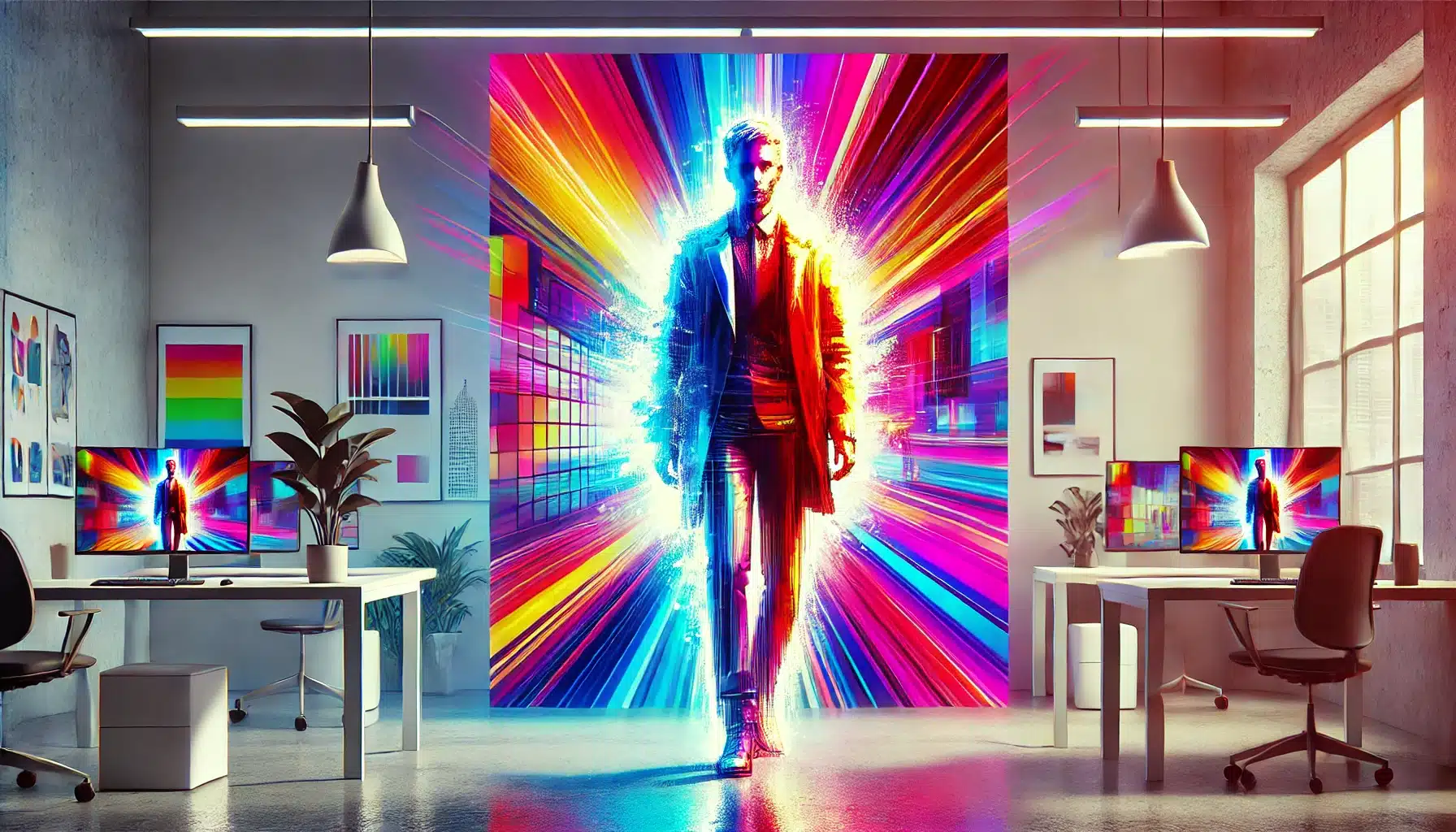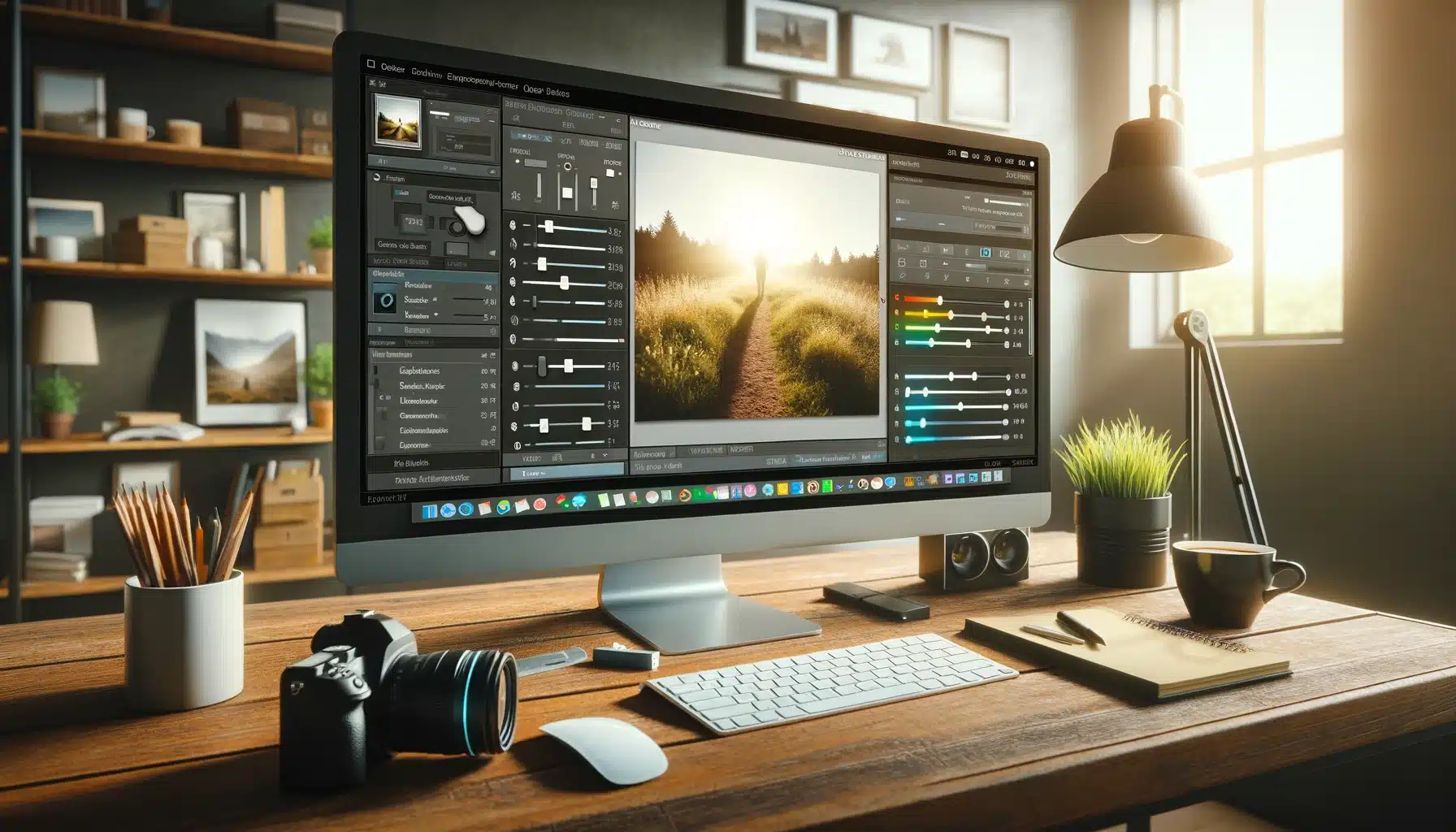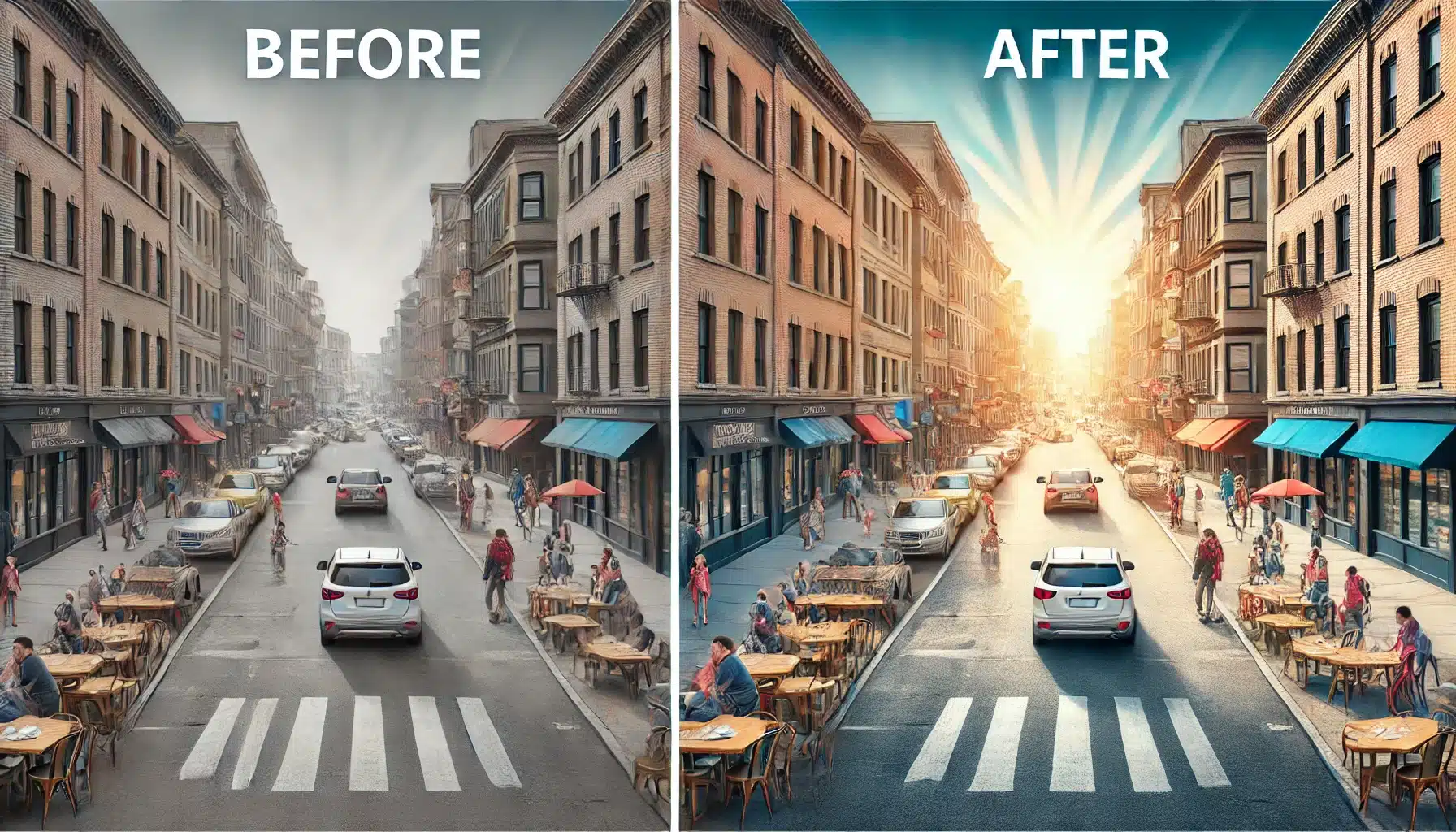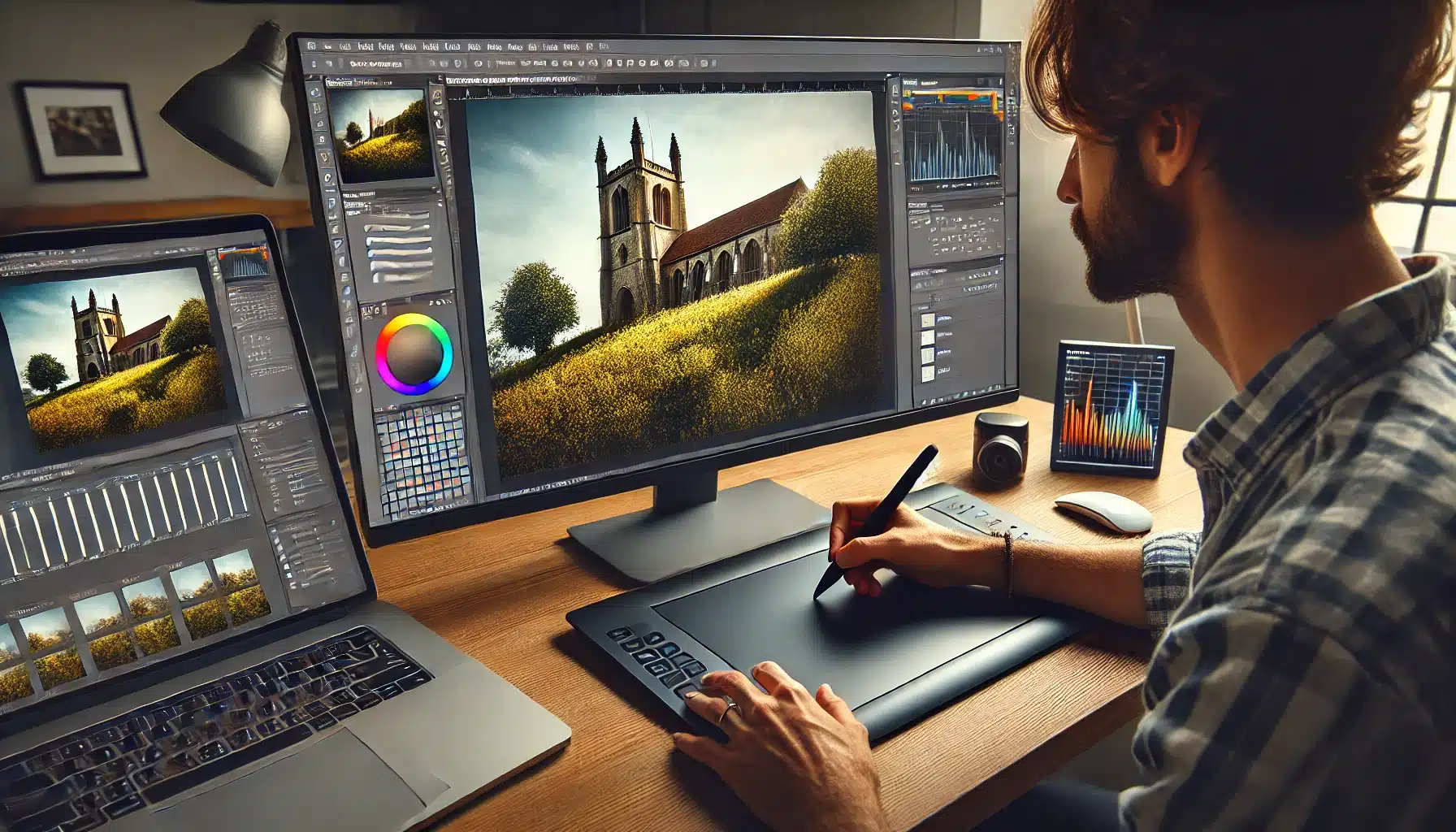
Introduction to How to Fix Overexposed Photos
Overexposure in photography happens when too much light hits the camera’s sensor. This leads to imageries that are too luminous, particularly in the highlights. As a result, these areas may look washed out or completely white, lacking texture and detail. Learn how to fix overexposed photos, photo editing tips & different ways for overexposure correction & enhancing overexposed images is essential.
Achieving proper exposure is a balancing act. It requires controlling the illumination entering the camera. The goal is to avoid pictures being too overlit image (overexposed) or too dark (underexposed). Consequently, overexposure correction can remove the fine details in the luminous parts of a scene. These areas, such as clouds in a sunset or snow in a landscape, are often the most visually appealing.

Table of Contents
Common Causes of Overexposure

Neglecting to use neutral density filters or improper metering can lead to enhancing overexposed images, where highlights are blown out, losing detail in the luminous areas. Well, understanding these photo editing tips can significantly improve your ability to prevent and correct luminance, especially when working with software like PaintShop for repair.
The query of how to fix overexposed photos could be for multiple reasons. However, this can be solved with the realm of photo editing tips that are detailed below:
- Excessive Lighting: Extra illuminance is frequently the result of too much illumination entering the camera, necessitating effective overexposure correction techniques. In such scenarios, managing the luminance with a layer of exposure control is essential. Applying a layer of neutral density filter, for example, can reduce the intensity of incoming illumination and mitigate over-lit image.
- Incorrect Settings: Over-illumination can also occur due to improper camera configurations, further highlighting the need for overexposure correction. A high International Organization for Standardization (ISO) configuration increases the sensor's sensitivity to luminance, which is useful in low-luminance conditions but can cause extra luminance in sunnier environments. Similarly, a wide aperture (lower f-number) allows more luminance to hit the sensor, increasing the risk of a high-key picture, especially in well-lit configurations.
| Camera Setting | High Value Effect | Low Value Effect | Optimal Use Case |
|---|---|---|---|
| International Organization for Standardization | Increases sensitivity to illumination, risk of high-key picture | Decreases sensitivity, reduces illumination risk | Use low ISO in luminous conditions to prevent high-key picture |
| Aperture (f-number) | Allows more luminance, higher risk of illumination | Allows less illumination, fix brightness risk | Use smaller f-stop (higher f-number) in bright settings to limit luminance intake |
| Shutter Speed | Shorter exposure time, less luminance, reduces over-luminance | Longer exposure time, more luminance. | Use faster shutter speed in over lit image conditions to cut down luminance entry |
How to Fix Over Exposed Photos
Tackling how to fix overexposed photos correctly can turn a flawed shot into a masterpiece, aligning with photography editing strategies. Starting with your RAW files offers the best foundation for detailed editing. With a click, you open these files and set to work. Using tools like the exposure slider, layer masks, and adjustment modes, you can reduce over-brightness, a fundamental part of digital retouching guidelines. Adjusting sliders to the left, applying layers for specific fixes, and switching to brush mode for detailed edits are crucial steps in the photography editing strategies. This guide walks you through each stage to repair overexposed photos effectively.
Steps To Fix Over Exposed Photos
So, for the solution of how to fix overexposed photos you need to follow these steps one by one;
- Work with RAW Files: Begin by loading your RAW files into your preferred editing software. RAW files, offering more data, grant flexibility to fix illumination, aiding in brightness reduction. Click on the file to start.
- Assess the Overexposure: Check the graphical representation on the left of your screen. A right-leaning peak indicates over-lit, showing the need for adjustment.
- Use the Recovery Slider: Find the recovery or highlights slider in your software. Dragging this slider left reduces over-lit areas, an essential part of restoring over-lit pictures. Work slowly to prevent underexposure.
- Adjust the Exposure: If the shot remains too bright, click the exposure slider and move it left, reducing overall light. Ensure the image keeps a natural look.
- Apply a Layer Mask: Set a new adjustment layer for overexposed parts. This technique lets you correct specific areas without altering the whole photo.
- Switch to Brush Mode: With a brush in mask mode, paint over bright areas for precise control and direct adjustments.
- Fine-Tune with Sliders: Use contrast, shadows, and black level sliders to reclaim detail in over-lit spots. Moving these sliders left often restores lost textures and colors.
- Compare Before and After: Regularly toggle between before and after views to gauge your adjustments. This ensures the corrections look natural and fix the illumination.
- Save Your Work: After correcting, save the photo as a new file, keeping the original intact. This step is key in enhancing overexposed images.
For those inspired to enhance their photos need to learn editing course further as this will help in how to fix overexposed photos
How to Prevent to Get Overexposed Photos

Fixing overexposed photos, or overexposure correction, is crucial in photography. It helps restore detail and balance in your pictures, making them look their best. With photo editing tips, adding adjustment layers is a significant part of overexposure correction. This method improves the scene by retrieving lost details and preserving the photo’s true appearance and solves the query of how to fix overexposed photos using lens correction.
Adjusting Camera Settings
To fix brightness of a picture, which is part of overexpose correction, you need to change the camera settings. Begin with the ISO; reducing it decreases light sensitivity, an essential aspect of overexpose correction. Then, increase the diaphragm speed to lessen the light’s impact. Next, decrease the f-stop to admit less light. For example, in a brightly lit beach scene, you could set the ISO to 100, diaphragm speed to 1/1000th second, and f-stop to f/16. This will make the scene appear correctly balanced, showcasing effective overexpose correction. The low sensor sensitvity may lead to a grainy image. A slow shutter speed, by keeping the sensor exposed to illumination for a longer time, can further exacerbate the issue, necessitating a careful repair approach in editing programs like PaintShop.
Using Camera Modes
Modern cameras feature tools that aid in overexposure correction, like exposure compensation. This tool modifies the camera’s light perception to match the current environment, crucial for challenging lighting situations. With the correct adjustments, you can transform a scene that is too bright into a photograph with perfect lighting, demonstrating successful overexpose correction.
To prevent overexposed photos, an iPhone user should adjust the exposure settings manually, ensuring the background remains balanced. By using the Pro mode, the user can find the ideal lighting conditions and make real-time adjustments. It’s essential to find a good balance between light and shadow to maintain detail in the background. With practice, an iPhone user will adjust to different scenarios and proactively prevent overexposure.
| Solution | Action | Benefit |
|---|---|---|
| ISO Adjustment | Decrease ISO | Reduces sensor’s luminance sensitivity |
| Shutter Speed Control | Increase speed | Limits the amount of illumination entering |
| F-stop Adjustment | Use smaller f-stop (higher f-number) | Decreases luminance intake |
| Exposure Compensation | Apply negative compensation | Corrects for misleading lighting conditions |
Post-Processing Techniques for Fixing Overexposed Photos
In photography, getting post-processing right is key, especially for how to fix overexposed photos. Using editing strategies, like layer adjustments, helps a lot. These strategies let photographers fine-tune overexposed spots. They guide through tweaks in editing software, turning overexposed shots into well-lit photos. These photo editing tips are important to get the balance and detail right in your fixing images distortion.
Editing Software
Editing software is great for fixing too much light in photos. With tools like Adobe Photoshop or Lightroom, you can change how bright or dark an image is. Making these changes is important to correct extra luminance. To fix brightness, you can see details again in bright areas. Adjusting contrast helps keep the photo looking deep and full. For example, if a photo’s sky is too bright, editing will fix brightness and bring back details like clouds and colors. Many free editing programs can make these adjustments too.
FAQs: Addressing Common Concerns with Overexposure
What causes overexposure in photography?
Excessive light hitting the camera’s sensor leads to extra illumination, creating too-bright images and losing highlight details, necessitating the process of enhancing overexposed images. This is noticeable in software like PaintShop, where a left-skewed histogram shows a need for darker tones to fix brightness.
How can I tell if my photo is overexposed?
Identify extra luminance by looking for washed-out or white areas. A right-heavy graphical representation in editing software, even free tools, also indicates overexposure, suggesting a shift towards brighter tones. Recognizing these signs is crucial for enhancing overexposed images effectively. Through diligent practice and applying the techniques discussed, I learned to balance the exposure, capturing the moment’s true essence through Photoshop.
Are some times of day more likely to cause overexposure?
Yes, shooting at midday or when the sun is highest can cause overexposure due to intense light. Careful exposure management during these times is best to maintain detail and balanced lighting. Therefore, managing illumination through camera configurations or using physical filters in software like PaintShop can help maintain the balance in the image’s exposure, demonstrating the importance of overexposure correction.
Conclusion: How to Fix Overexposed Photos
In conclusion, mastering the art of enhancing overexposed images is a journey I’ve personally embarked on, transforming challenges into triumphs. One vivid example is when I captured the serene beauty of a sunrise over the mountains. Initially, my pictures were overexposed, losing the intricate colors of the dawn.
Whether you’re interested in the Photoshop Course Masterclass or the Lightroom Course, these comprehensive guides offer invaluable insights and practical experience to elevate your photography journey. Embark on this learning path and unlock your potential to create breathtaking pictures with perfect exposure using the best photo editing tips.
Have a nice photoshoot!
Learn more about Photo Editing with Lightroom and Photoshop:

















